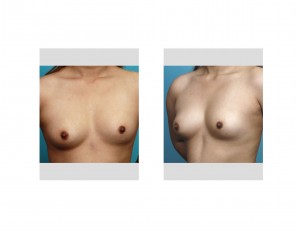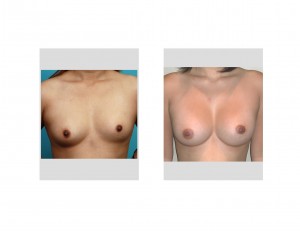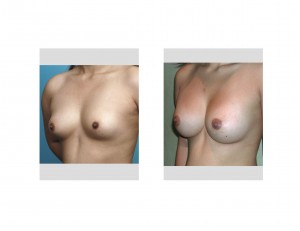Background: Breast augmentation is completely successful at enlarging the breast mounds. While it is not without its potential complications due to being an implant placed in the body through surgery, by far its most common postoperative concerns are aesthetic in nature. Are the breasts the desired size and shape and how well do they match are the critical aesthetic judgments that determine a woman’s satisfaction with their cosmetic result.
While women understandably spend considerable time before surgery focused on the desired size of the breasts they want and what implant is needed to get there, they often overlook the importance of breast symmetry. Not that women don’t want or care less about symmetry than breast size, it is just an issue that they assume will happen from the surgery…because a paired set of breast implants are identical/symmetric regardless of their size.
But the risks of asymmetry are major concerns to plastic surgeons and often one of the most important issues that are being evaluated during breast augmentation surgery. This is because plastic surgeons know full well that few women have symmetric breasts and implant enlargement usually goes on to reveal the significance of those asymmetries. In other words, when one has small breasts those asymmetries may be barely perceptible or often not known at all by the patient. But when the breast mounds are significantly increased, so to may be these asymmetries.



Case Highlights:
1) Breast asymmetry is very common in women who undergo breast augmentation.
2) It is a common misconception that the placement of breast implants will somehow improve breast asymmetry…but it usually will not and may even make it worse.
3) Breast implants may occasionally improve breast asymmetry if the mound difference is the main cause of the breast differences. But the differences in the horizontal level of the nipple-areolar complexes will remain unless a concurrent or delayed superior nipple lift is done.
Dr. Barry Eppley
Indianapolis, Indiana


